#Kenya Wildlife Service
Explore tagged Tumblr posts
Text
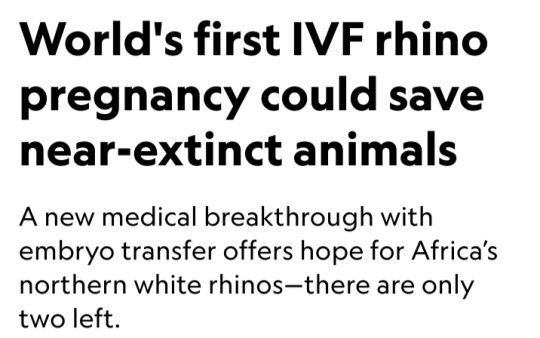
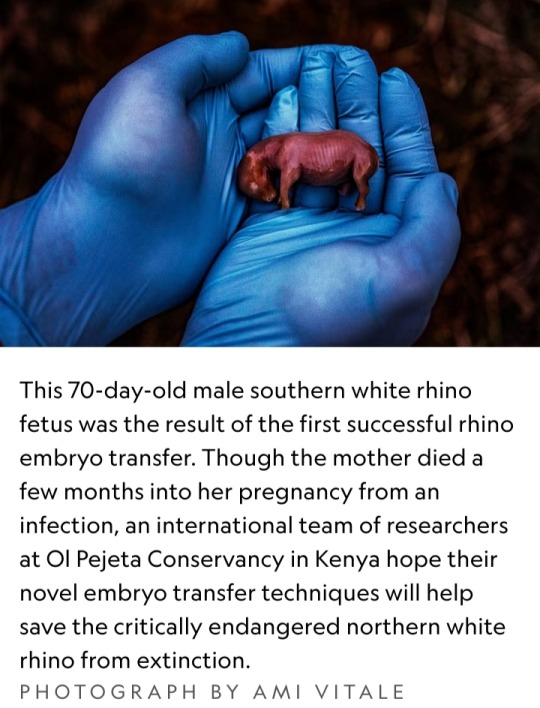
By Dina Fine Maron
January 24, 2024
Scientists have cleared a significant hurdle in the years-long effort to save Africa’s northern white rhinoceros from extinction with the first-ever rhino pregnancy using in vitro fertilization.
The lab-assisted pregnancy, which researchers will announce today, involved implanting a southern white rhino embryo in a surrogate mother named Curra.
The advance provides the essential “proof of concept” that this strategy could help other rhinos, says Jan Stejskal of the BioRescue project, the international group of scientists leading this research.
Curra died just a couple months into her 16-month pregnancy from an unrelated bacterial infection, Stejskal says.
However, the successful embryo transfer and early stages of pregnancy pave the way for next applying the technique to the critically endangered northern white rhino.
The process was documented exclusively by National Geographic for an upcoming Explorer special currently slated to air in 2025 on Nat Geo and Disney+.
BioRescue expects to soon implant a northern white rhino embryo into a southern white rhino surrogate mother.
The two subspecies are similar enough, according to the researchers, that the embryo will be likely to develop.
Eventually, this approach may also help other critically endangered rhinos, including the Asian Javan rhinoceros and the Sumatran rhinoceros, which each now number under 100 individuals, Stejskal says.
But the northern white rhino’s current situation is the most pressing by far.
There are no males left, and the only two remaining animals are both elderly females that live under armed guard on a reserve in a 700-acre enclosure in Kenya called Ol Pejeta Conservancy.
The boxy-jawed animals once roamed across central Africa, but in recent decades, their numbers have plummeted due to the overwhelming international demand for their horn, a substance used for unproved medicinal applications and carvings.
Made from the same substance as fingernails, rhino horn is in demand from all species, yet the northern white rhino has been particularly hard-hit.
"These rhinos look prehistoric, and they had survived for millions of years, but they couldn’t survive us,” says Ami Vitale, a National Geographic Explorer and photographer who has been documenting scientists’ efforts to help the animals since 2009.
“If there is some hope of recovery within the northern white rhino gene pool — even though it’s a substantially smaller sample of what there was — we haven’t lost them,” says conservation ecologist David Balfour, who chairs the International Union for the Conservation of Nature’s African rhino specialist group.
Blueprints for rhino babies

To stave off the animal’s disappearance, BioRescue has used preserved sperm from northern white rhinos and eggs removed from the younger of the two remaining females.
So far, they’ve created about 30 preserved embryos, says Thomas Hildebrandt, the head scientist of BioRescue and an expert in wildlife reproduction based at the Leibniz-Institute of Zoo and Wildlife Research in Berlin.
Eventually, the team plans to reintroduce northern white rhinos into the wild within their range countries.
“That’d be fantastic, but really, really far from now—decades from now,” says Stejskal.
Worldwide, there are five species of rhinoceros, and many are in trouble.
Across all of Africa, there are now only about 23,000 of the animals, and almost 17,000 of them are southern whites.
Then there are more than 6,000 black rhinos, which are slightly smaller animals whose three subspecies are critically endangered.
In Asia, beyond the critically endangered Javan and Sumatran rhinos, there’s also the greater one-horned rhino, whose numbers are increasing and currently are estimated to be around 2,000.
The BioRescue effort has experienced many setbacks, and even though the team now has frozen embryos, the clock is ticking.
The researchers intend to use southern white rhinos as surrogate moms for the northern white rhino embryos.
However, scientists want any northern white rhino calves to meet and learn from others of their kind, which means they need to be born before the two remaining females die.
“These animals learn behaviors — they don’t have them genetically hard-wired,” says Balfour, who’s not involved with the BioRescue work.
But birthing new animals in time will be a challenge.
“We’re really skating on the edge of what’s possible,” he says, “but it’s worth trying.”
Najin, the older female, will be 35 this year, and Fatu will be 24.
The animals, which were born in a zoo in the Czech Republic, are expected to live to about 40, says Stejskal, who also serves as director of international projects at the Safari Park Dvůr Králové, the zoo where the animals lived until they were brought to Kenya in 2009.
Impregnating a rhino

The next phase of BioRescue’s plan involves implanting one of their limited number of northern white rhino embryos into a southern white rhino surrogate mother — which the group plans to do within the next six months, Stejskal says.
They’ve identified the next surrogate mother and set up precautions to protect her from bacterial infections, including a new enclosure and protocols about disinfecting workers’ boots.
But now, they must wait until the female rhino is in estrus — the period when the animal is ready to mate — to implant the egg.
To identify that prime fertile time, they can’t readily perform regular ultrasounds at the conservancy as they might do in a zoo.
Instead, they have enlisted a rhino bull that has been sterilized to act as a “teaser” for the female, Hildebrandt says, adding that they must wait a few months to make sure that their recently sterilized male is truly free of residual sperm.
Once the animals are brought together, their couplings will alert conservancy staff that the timing is right for reproductive success.
The sex act is also important because it sets off an essential chain of events in the female’s body that boosts the chances of success when they surgically implant the embryo about a week later.
"There’s little chance the conservancy staff will miss the act. White rhinos typically mate for 90 minutes," Hildebrandt says.
What’s more, while mounted on the females, the males often use their temporary height to reach tasty plant snacks that are generally out of reach.
Boosting genetic diversity
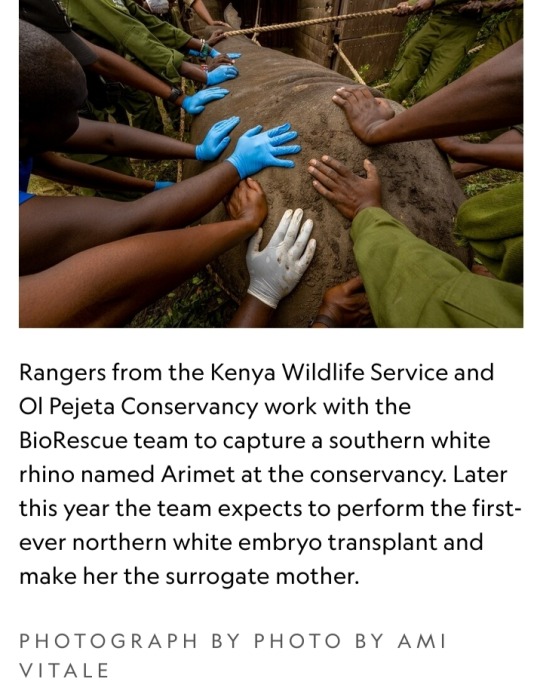
With so few northern white rhinos left, their genetic viability may seem uncertain.
But the BioRescue team points to southern white rhinos, whose numbers likely dropped to less than 100, and perhaps even as few as 20, due to hunting in the late 1800s.
Government protections and intense conservation strategies allowed them to bounce back, and now there are almost 17,000.
“They have sufficient diversity to cope with a wide range of conditions,” says Balfour.
Researchers don’t know exactly how many southern white rhinos existed a century ago, he says, but it’s clear that the animals came back from an incredibly low population count and that they now appear healthy.
Beyond their small collection of embryos, the BioRescue team hopes to expand the northern white rhino’s gene pool by drawing from an unconventional source — skin cells extracted from preserved tissue samples that are currently stored at zoos.
They aim to use stem cell techniques to reengineer those cells and develop them into sex cells, building off similar work in lab mice.
According to their plan, those lab-engineered sex cells would then be combined with natural sperm and eggs to make embryos, and from there, the embryos would be implanted into southern white rhino surrogate mothers.
Such stem cell reprogramming work has previously led to healthy offspring in lab mice, Hildebrandt says, but rhinos aren’t as well-studied and understood as mice, making this work significantly challenging.
A global effort
The northern white rhino revitalization venture has cost millions of dollars, supported by a range of public and private donors, including the German Federal Ministry of Education and Research.
Other partners on the effort include the Leibniz Institute for Zoo and Wildlife Research, the Czech Republic’s Safari Park, Kenya Wildlife Service, Ol Pejeta Conservancy, and also Katsuhiko Hayashi, a professor of genome biology at Osaka University in Japan who conducted the mouse stem cell research.
Building upon Hayashi’s stem cell techniques could ultimately bring the northern white rhino gene pool up to 12 animals — including eggs from eight females and the semen of four bulls, according to Stejskal.
An alternative approach to making more babies, like crossbreeding northern and southern white rhinos, would mean the resulting calves wouldn’t be genetically pure northern white rhinos, Hildebrandt notes.
The two subspecies look quite similar, but the northern version has subtle physical differences, including hairier ears and feet that are better suited to its swampy habitat.
The two animals also have different genes that may provide disease resiliency or other benefits, Hildebrandt says.
There are unknown potential differences in behavior and ecological impact when populating the area with southern white rhinos or cross-bred animals.
"The northern white rhino is on the brink of extinction really only due to human greed,” Stejskal says.
“We are in a situation where saving them is at our fingertips, so I think we have a responsibility to try.”

🩶🦏🩶
#northern white rhinoceros#rhino embryo transfer#in vitro fertilization#IVF#southern white rhinoceros#critically endangered animals#National Geographic#BioRescue#rhino horn#International Union for the Conservation of Nature#African rhino specialist group#Thomas Hildebrandt#German Federal Ministry of Education and Research#Leibniz Institute for Zoo and Wildlife Research#Kenya Wildlife Service#Ol Pejeta Conservancy#Katsuhiko Hayashi#genome biology#IVF rhino pregnancy
10 notes
·
View notes
Text
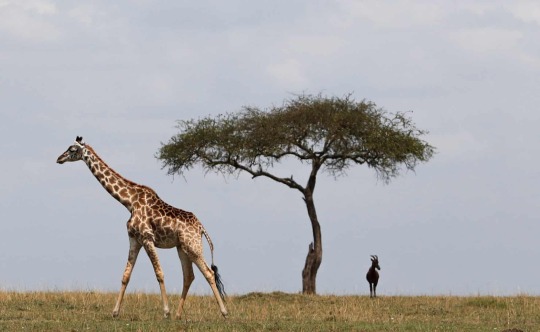
A giraffe walks in open grass as Kenya Wildlife Service veterinarians fit them with solar-powered GPS tracking devices in the Maasai Mara game reserve in Narok county, Kenya. The devices will provide the necessary fine-scale information to understand giraffe movement patterns across diverse habitats, to curb the challenge of climate breakdown leading to human wildlife conflict, enabling policymakers to make informed decisions about conserving populations
Photograph: Thomas Mukoya/Reuters
#thomas mukoya#photographer#reuters#giraffe#animal#mammal#wildlife#kenya wildlife service#masai mara game reserve#kenya#narok county#nature
7 notes
·
View notes
Text
KWS using their helicopter to scare away Elephant's along Mai Mahiu -Nak...
youtube
0 notes
Text
PROVISION OF GROUP LIFE ASSURANCE SERVICE (POLICIES FOR YEARS 2024/2027 - KWS
KENYA WILDLIFE SERVICE TENDERS OCTOBER 2024 TENDER RE-ADVERTISEMENT KWS is inviting interested and eligible national candidates to tender for the following: NO. TENDER REFERENCE NO. TENDER NAME ELIGIBILITY BID SECURITY 1. KWS/ONT/ADMIN/36/2024-2025 PROVISION OF GROUP LIFE ASSURANCE SERVICE (POLICIES FOR YEARS 2024/2025, 2025/2026, 2026/2027) OPEN TO…
0 notes
Text
Festive Fun Awaits: FoNNaP's Xmas Raffle Extravaganza!
🌿 Join the Festive Fun with FoNNaP’s Xmas Raffle Contest!🎄 Get ready to unwrap the magic of the season with Friends of Nairobi National Park (FoNNaP). We’re thrilled to bring you an exciting Xmas raffle contest filled with amazing Safari prizes that will make your holidays unforgettable. 🦓 Why Join the Xmas Raffle Contest? Every ticket you purchase is a step towards supporting our conservation…

View On WordPress
#Conservation#Conservationist#FIFA#FIFA WORLD CUP 2022#FONNAP#Friends of Nairobi National Park#fundraiser#Gareth Jones#H&S Magazine#H&S Magazine Kenya#Karen#Kenya Wildlife Services#KWS#Liverpool#Liverpool fans#Liverpool shirts#Luis Diaz#luncheon#M. Salah#Magazine Kenya#Mo Salah#Nairobi National Park#protecting the wildlife#Raffle#save the elephants#Save the Rhino#Signed shirts by players#silver jubilee#Wildlife conservation#win Liverpool merchandise
0 notes
Text
"The struggle to keep one of the world’s largest and rarest antelope species alive has taken a massive step forward in Kenya.
17 mountain bongos have been flown to Kenya from the Rare Species Conservation Center in Florida for eventual reintroduction into their natural habitat.
A subspecies of bongo, the largest of the forest-dwelling antelope, the eastern, or mountain bongo, numbers less than 100 individuals, and is listed by the IUCN as Critically-Endangered. More survive today in zoos than in the wild.
The history of the animal is an interesting one, as it’s believed to have become a forest species when climate change turned savannah areas into forests thousands of years ago. In the case of the mountain bongo, their home range is located in southern Kenya, on the slopes of Mount Kenya National Park and in the surrounding woodland.
They are the world’s third-largest antelope species behind the giant eland and common eland.
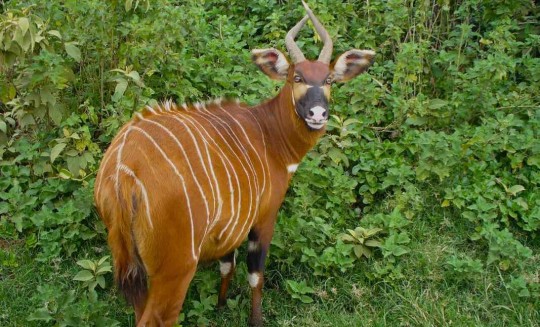
Pictured: Female mountain bongo (Tragelaphus eurycerus isaaci) photographed at Mount Kenya National Park.
Tourism Minister Rebecca Miano described the arrival of the bongos at the country’s main airport on Sunday night as “emotional and so cool.”
The animals will first be kept in an acclimation center run by the Kenyan Wildlife Service (KWS) that will protect them while they re-hone their instincts for wild living.
Within three months, the BBC reports, the KWS will be welcoming another shipment of these bongo from captive breeding programs across Europe.
The last time a large shipment of animals like this made it to Kenya was in 2004, when 18 animals arrived safely. They successfully integrated with the wild population, and though some died of tick-borne diseases, it demonstrated that captive animals can successfully make it in the wild if given time and training."
-via Good News Network, February 26, 2025
#antelope#bongo#endangered species#conservation#wildlife#animal photography#wildlife photography#wild animals#wildlife conservation#kenya#africa#good news#hope
632 notes
·
View notes
Text
As a helicopter hovers close to an elephant, trying to be as steady as possible, an experienced veterinarian cautiously takes aim. A tranquilizer dart whooshes in the air, and within minutes the giant mammal surrenders to a deep slumber as teams of wildlife experts rush to measure its vitals and ensure it’s doing ok. Kenya is suffering from a problem, albeit a good one: the elephant population in the 42-square-kilometer (16-square-mile) Mwea National Reserve, east of the capital Nairobi, has flourished from its maximum capacity of 50 to a whopping 156, overwhelming the ecosystem and requiring the relocation of about 100 of the largest land animals. It hosted 49 elephants in 1979. According to the Kenya Wildlife Service Director General Erustus Kanga, the overpopulation in Mwea highlighted the success of conservation effort s over the last three decades. “This shows that poaching has been low and the elephants have been able to thrive,” Kanga said. Experts started relocating 50 elephants last week to the expansive 780-square-kilometer (301-square-mile) Aberdare National Park in central Kenya. As of Monday, 44 elephants had been moved from Mwea to Aberdare, with six others scheduled for Tuesday.
156 notes
·
View notes
Text
Dandelion News - October 15-21
Like these weekly compilations? Tip me at $kaybarr1735 or check out my Dandelion Doodles on Patreon!
1. EV owners volunteer to drive voters to the polls in 11 states (and you can too)

“ChargeTheVote.org is a nonpartisan voter education and engagement initiative to enhance voter turnout in the 2024 election by providing zero-emission transportation in electric vehicles (EVs) to local polling locations. ChargeTheVote will also host a webinar for those who are interested in participating this coming Tuesday, October 22 at 7pm Eastern time.”
2. Kenya moves 50 elephants to a larger park, says it’s a sign poaching is low
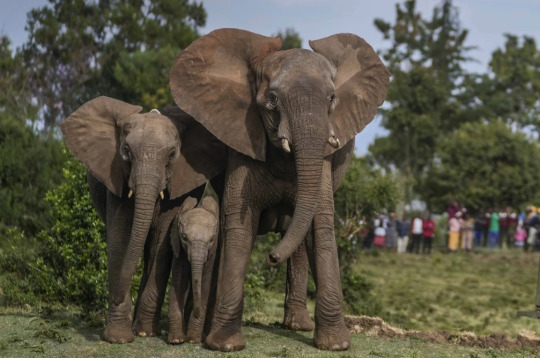
“The elephant population in the […”Mwea National Reserve”…] has flourished from its capacity of 50 to a whopping 156 […] requiring the relocation of about 100 of [them…. The] overpopulation in Mwea highlighted the success of conservation efforts over the last three decades.”
3. Australian start-up secures $9m for mine-based gravity energy storage technology

““We expect to configure the gravitational storage technology [which the company “hopes to deploy in disused mines”] for mid-duration storage applications of 4 to 24 hours, deliver 80% energy efficiency and to enable reuse of critical grid infrastructure.“”
4. Africa’s little-known golden cat gets a conservation boost, with community help

“[H]unting households were given a pregnant sow [… so that they] had access to meat without needing to trap it in the wild. […] To address income needs, Embaka started […] a savings and loan co-op[… and an] incentive for the locals to give up hunting in exchange for regular dental care.”
5. 4.8M borrowers — including 1M in public service — have had student debt forgiven

“That brings the total amount of student debt relief under the administration to $175 billion[….] The Education Department said that before Biden's presidency, only 7,000 public servants had ever received student debt relief through the Public Service Loan Forgiveness program. […] "That’s an increase of more than 14,000% in less than four years.””
6. Puerto Rico closes $861M DOE loan guarantee for huge solar, battery project
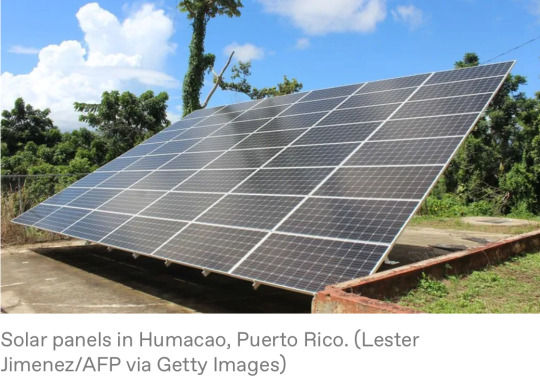
“The solar plants combined will have 200 megawatts of solar capacity — enough to power 43,000 homes — while the battery systems are expected to provide up to 285 megawatts of storage capacity. [… O]ver the next 10 years, more than 90 percent of solar capacity in Puerto Rico will come from distributed resources like rooftop solar.”
7. Tim Walz Defends Queer And Trans Youth At Length In Interview With Glennon Doyle
“Walz discussed positive legislative actions, such as codifying hate crime laws and increasing education[.… “We] need to appoint judges who uphold the right to marriage, uphold the right to be who you are [… and] to get the medical care that you need.””
8. Next-Generation Geothermal Development Important Tool for Clean Energy Economy
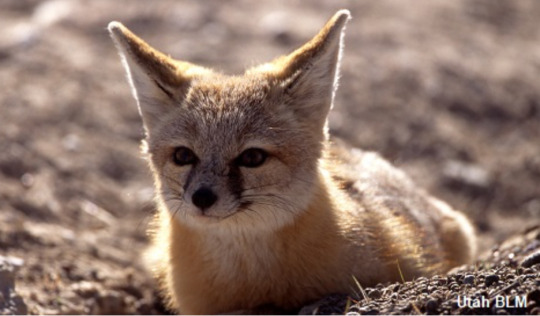
““The newest forms of geothermal energy hold the promise of generating electricity 24 hours a day using an endlessly renewable, pollution-free resource[… that] causes less disturbance to public lands and wildlife habitat […] than many other forms of energy development[….]”
9. Sarah McBride hopes bid to be first transgender congresswoman encourages ’empathy’ for trans people

““Folks know I am personally invested in equality as an LGBTQ person. But my priorities are going to be affordable child care, paid family and medical leave, housing, health care, reproductive freedom. […] We know throughout history that the power of proximity has opened even the most-closed of hearts and minds.”“
10. At Mexico’s school for jaguars, big cats learn skills to return to the wild
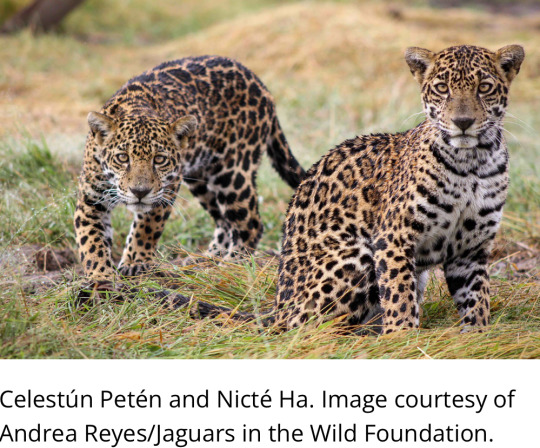
“[A team of scientists] have successfully released two jaguars, and are currently working to reintroduce two other jaguars and three pumas (Puma concolor). [… “Wildlife simulation”] “keeps the jaguars active and reduces the impact of captivity and a sedentary lifestyle[….]””
October 8-14 news here | (all credit for images and written material can be found at the source linked; I don’t claim credit for anything but curating.)
#good news#hopepunk#electric vehicles#voting#elephant#kenya#conservation#australia#battery#energy storage#africa#cats#hunting#tw animal death#student loans#student debt#debt relief#education#puerto rico#solar#solar panels#solar energy#solar power#tim walz#lgbt#lgbtq#geothermal#renewableenergy#trans rights#transgender
29 notes
·
View notes
Text

Excerpt from this story from the Associated Press (AP):
As a helicopter hovers close to an elephant, trying to be as steady as possible, an experienced veterinarian cautiously takes aim.
A tranquilizer dart whooshes in the air, and within minutes the giant mammal surrenders to a deep slumber as teams of wildlife experts rush to measure its vitals and ensure it’s doing OK.
Kenya is suffering from a problem, albeit a good one: The elephant population in the 42-square-kilometer (16-square-mile) Mwea National Reserve, east of the capital Nairobi, has flourished from its capacity of 50 to a whopping 156, overwhelming the ecosystem and requiring the relocation of about 100 of the largest land animals. It hosted 49 elephants in 1979.
According to the Kenya Wildlife Service Director General Erustus Kanga, the overpopulation in Mwea highlighted the success of conservation effort s over the last three decades.
“This shows that poaching has been low and the elephants have been able to thrive,” Kanga said.
Experts started relocating 50 elephants last week to the expansive 780-square-kilometer (301-square-mile) Aberdare National Park in central Kenya. As of Monday, 44 elephants had been moved from Mwea to Aberdare, with six others scheduled for Tuesday.
A second phase to relocate 50 other elephants is planned, but the date has not been disclosed.
The project has cost at least 12 million Kenyan shillings ($93,000), the wildlife agency said.
30 notes
·
View notes
Text
King Charles III and Queen Camilla will undertake a State Visit to Kenya
The visit will take place from Tuesday 31st October to Friday 3rd November 2023, and will celebrate the warm relationship between the two countries and the strong and dynamic partnership they continue to forge.
The visit is at the invitation of President Ruto and comes as Kenya prepares to celebrate 60 years of independence. His Majesty’s first visit to a Commonwealth nation as King is therefore to the country in which Queen Elizabeth II’s reign began, having acceded to the throne in Kenya in February 1952.
The King and Queen will visit Nairobi City County, Mombasa County and surrounding areas. Their Majesties’ programme will reflect the ways in which Kenya and the United Kingdom are working together, notably to boost mutual prosperity, tackle climate change, promote youth opportunity and employment, advance sustainable development and create a more stable and secure region.
During the visit, Their Majesties will meet President Ruto and the First Lady as well as and other members of the Kenyan Government, UN staff, CEOs, faith leaders, young people, future leaders and Kenyan Marines training with UK Royal Marines. The King will also attend an event to celebrate the life and work of the Nobel Laureate the late Professor Wangari Maathai, together with Wangari’s daughter, Wanjira Mathai.
The King and Queen’s programme will celebrate the close links between the British and Kenyan people in areas such as the creative arts, technology, enterprise, education and innovation. The visit will also acknowledge the more painful aspects of the UK and Kenya’s shared history, including the Emergency (1952-1960). His Majesty will take time during the visit to deepen his understanding of the wrongs suffered in this period by the people of Kenya. Together, Their Majesties will tour a new museum dedicated to Kenya’s history and will lay a wreath at the Tomb of the Unknown Warrior at Uhuru Gardens, as well as visiting the site of the declaration of Kenya’s independence in 1963.
The King and Queen’s programme also will include:
Their Majesties will be greeted in Nairobi with a ceremonial welcome at State House and will each attend bilateral meetings – The King with The President and The Queen with the First Lady, before The President hosts a State Banquet at State House.
His Majesty will visit the United Nations Office at Nairobi, to learn more about the work of UN Habitat and the UN Environment Programme. UNON is the only UN Headquarters in the Commonwealth.
His Majesty will attend a technology showcase, meeting Kenyan entrepreneurs who are driving forward innovation in the country’s tech sector. Kenya has the third largest start up eco-system in Africa.
His Majesty will host a reception focussed on Kenya’s young people and future leaders across development, trade, media, the creative arts and environmental conservation.
Their Majesties will visit a Commonwealth War Graves Commission cemetery, joining British and Kenyan military personnel in an act of Remembrance, before hearing about the Commission’s recent work to ensure all those who supported Britain’s efforts in both World Wars are commemorated.
The King and Queen will visit Nairobi National Park to witness the vital conservation work being undertaken by the Kenya Wildlife Service, which is integral to Kenya’s thriving tourism industry.
Her Majesty, Patron of the equine welfare charity Brooke, will hear how the charity is working with the Kenya Society for the Protection and Care of Animals to rescue donkeys at risk and promote their welfare.
The King, as Captain General of the Royal Marines, and The Queen, will visit Mtongwe Naval Base in Mombasa. There, Their Majesties will witness Kenyan Marines, trained by the Royal Marines, demonstrating a covert beach landing, showing defence collaboration in action.
The Queen will meet survivors of sexual and gender-based violence, learning how they are supported and sharing her own insights from working in this area.
The King will meet faith leaders from Mombasa’s diverse community, hearing how they are working together to promote harmony amongst the city’s population.
44 notes
·
View notes
Text
Meet Roho, the orphaned elephant adopted by Hil, one of our original Tiny Crew, through the Sheldrick Wildlife Trust, for the #TinyCrewBigRaffle.
#ofmd#pirates#our flag means death#our flag means love#charity#ofmd s2#ofmd bts#our flag means gay#raffle#tinycrewbigraffle#tiny crew big rafflle
3 notes
·
View notes
Photo
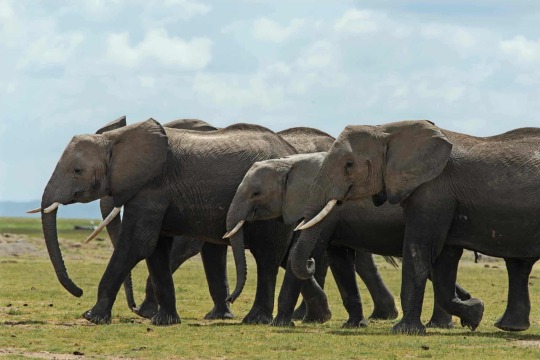
Elephants head towards hay delivered by Kenya Wildlife Services (KWS) ranger Josphat Wangigi (not seen) at the Amboseli National Park as feed-aid for forage-deprived herbivores hit hard by drought. In Kenya, the signs of the drought are everywhere. The earth is dry and cracked, animal bones lie along the trails and emaciated trees with yellowing leaves bear witness to the impact of the worst drought in 40 years.
Photograph: Tony Karumba/AFP/Getty Images
#tony karumba#photographer#afp via getty images#elephants#animal#mammal#wildlife#kenya wildlife services#amboseli national park#kenya#nature
31 notes
·
View notes
Text

Explore the Ultimate Tanzania Luxury Safari Experience with PoaPoa Tours
Tanzania is a land of diverse landscapes, from vast savannas and towering mountains to lush forests and pristine beaches. For travelers seeking an unforgettable, high-end experience, a Tanzania luxury safari offers the perfect blend of adventure and comfort. PoaPoa Tours is your gateway to exploring this East African gem in style, offering personalized itineraries and luxury accommodations that will leave you in awe.
Why Choose a Tanzania Luxury Safari?
A luxury safari in Tanzania is more than just game drives—it’s a full immersion into the heart of nature, combined with exclusive services. Whether you’re looking to witness the Great Wildebeest Migration in Serengeti, explore the stunning Ngorongoro Crater, or relax in a 5-star lodge after a thrilling day, PoaPoa Tours ensures every aspect of your journey is meticulously planned for your comfort.
Here are a few reasons why a Tanzania luxury safari should be on your bucket list:
Exclusive Lodging: Stay in world-class lodges or tented camps that offer high-end amenities, fine dining, and breathtaking views of Tanzania's wildlife right from your room.
Personalized Safari Experiences: With private guides, you can create your own itinerary, whether you want to focus on bird watching, photography, or witnessing the “Big Five.”
Unforgettable Wildlife Encounters: Watch elephants, lions, leopards, and giraffes in their natural habitat, all while enjoying premium service and accommodations.
Highlights of PoaPoa Tours’ Tanzania Luxury Safari
At PoaPoa Tours, we craft bespoke Tanzania safari experiences tailored to your preferences. Below are some of the key highlights that make our luxury safaris stand out:
Serengeti National Park: Known for the Great Wildebeest Migration, Serengeti is a must-visit for anyone seeking the ultimate safari experience. Enjoy the luxury of private game drives and exclusive lodges within the park.
Ngorongoro Crater: Stay in lodges perched on the edge of this UNESCO World Heritage Site, offering unmatched views and opportunities for game viewing.
Tarangire National Park: Famous for its large elephant herds, Tarangire offers a unique mix of lush landscapes and luxury accommodations.
Private Bush Dinners and Hot Air Balloon Rides: Make your safari even more special with private dining experiences under the African stars or a hot air balloon safari at sunrise.
Custom Luxury Packages: Whether you’re planning a family getaway, honeymoon, or solo adventure, PoaPoa Tours offers custom luxury safari packages that fit your desires and schedule.
Focus on Sustainability and Community
At PoaPoa Tours, we believe that luxury and sustainability go hand in hand. Our eco-friendly camps and lodges ensure minimal environmental impact while providing a high standard of comfort. Additionally, we support local communities through various initiatives, ensuring that your trip not only leaves a positive impact on you but also on Tanzania's people and wildlife.
Suggested Itineraries for a Tanzania Luxury Safari
10-Day Luxury Safari & Zanzibar Escape: Explore Serengeti, Ngorongoro Crater, and the pristine beaches of Zanzibar. This package combines wildlife with relaxation.
7-Day Luxury Serengeti & Ngorongoro Experience: Perfect for those who want a deeper immersion in Tanzania's most famous wildlife destinations.
14-Day Tanzania & Kenya Combined Safari: For the ultimate African adventure, this cross-border luxury safari covers both Tanzania and Kenya’s best national parks.
Why Book with PoaPoa Tours?
With decades of experience in providing top-tier safari experiences, PoaPoa Tours is your trusted partner for a luxury safari in Tanzania. Our expert guides, luxury accommodations, and commitment to sustainability make us the ideal choice for discerning travelers.
Book your Tanzania luxury safari with PoaPoa Tours today and embark on a journey you’ll never forget!
#TanzaniaLuxurySafari#ExploreTanzania#PoaPoaTours#LuxurySafari#AfricanSafari#SerengetiSafari#NgorongoroCrater#BigFiveSafari#SustainableTourism#SafariExperience
3 notes
·
View notes
Text
PROVISION OF GROUP LIFE ASSURANCE SERVICE FOR YEARS 2024/2026 - KWS
KENYA WILDLIFE SERVICE TENDERS OCTOBER 2024 INVITATION TO TENDER KWS is inviting interested and eligible national candidates to tender for the following: NO. TENDER REF NO. TENDER NAME ELIGIBILITY BID SECURITY 1. KWS/ONT/ADMIN /34/ 2024-2025 PROVISION OF GROUP LIFE ASSURANCE SERVICE FOR YEARS 2024/2025,2025/2026 OPEN TO ALL 500,000.00 2. KWS/ONT/ADMIN /35/ 2024-2025, GENERAL AND LIFE…
0 notes
Text
Once roaming freely across vast savannas, Africa's iconic rhino populations have faced a steep decline since the 1970s due to poaching and habitat loss. But there is hope as Kenya’s conservation efforts have made significant strides in protecting this endangered species. In total today, Kenya has 1,977 rhinos, including 1,004 eastern black rhinos, 971 southern white rhinos, and two critically endangered northern white rhinos.
The country's black rhino population has surpassed its national recovery target of 1,000 black rhinos, marking a remarkable 150% increase from around 400 in the 1980s according to the Kenya Wildlife Service (KWS). This achievement positions Kenya as a leader in black rhino conservation, behind South Africa and Namibia.
Recently, Kenya made international news with the successful translocation of 21 black rhinos to Loisaba Conservancy as part of a strategy to redistribute the rhino population. The translocated group, consisting of 10 bulls and 11 cows, originated from Nairobi National Park, Ol Pejeta Conservancy, and Lewa Wildlife Conservancy. Their arrival at Loisaba marks the species' return to the area for the first time since 1976. This relocation was prompted by the limited space available in Kenya's 16 black rhino sanctuaries. Overcrowding in these sanctuaries poses various risks, including territorial conflicts, aggression among male rhinos, and a decline in birth rates.
4 notes
·
View notes
